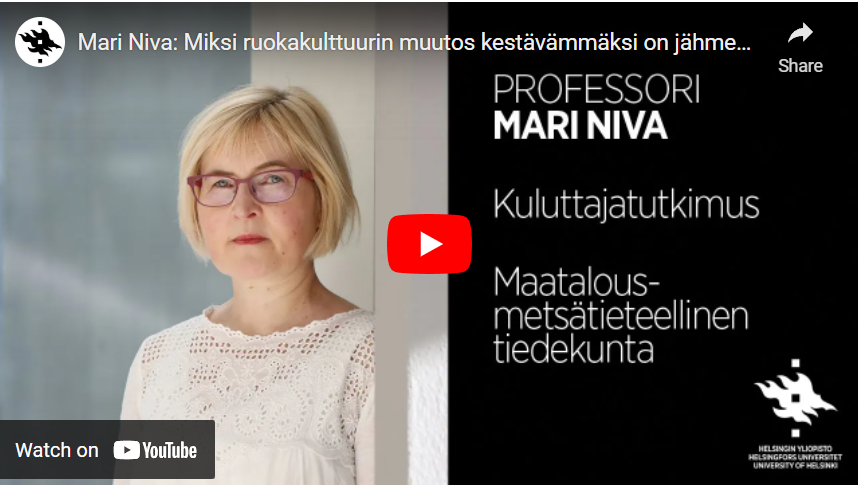Food Culture Has to Become More Sustainable, but Why Is the Transition So Rigid?
Mari Niva investigates meat consumption, novel protein sources, veganism and other phenomena related to the consumption of food from a social scientific perspective.
Mari Niva investigates meat consumption, novel protein sources, veganism and other phenomena related to the consumption of food from a social scientific perspective.
What are your research topics?
I study consumerism and phenomena related to consumption from the perspective of the social sciences, with sustainable food consumption as a particular topic of interest. What kinds of changes to everyday life does sustainability require, and what are people prepared to do? Together with my colleagues, we have investigated meat consumption, veganism as well as the use and acceptance of novel protein sources.
My other themes include political debate on the purity of food, eating in the everyday circumstances of the coronavirus pandemic and social norms related to sustainability. In an international study starting this spring, we will be looking for ways to improve the sustainability of the dairy sector and investigating the place of dairy products and alternative products in food culture.
Where and how does the topic of your research have an impact?
Our research helps to understand both the opportunities associated with the sustainability transition and the rigid nature of changes related to sustainability. The transformation of consumer practices is not enough on its own. We are explaining how consumption is intertwined with established practices in everyday life.
Our research on the pandemic demonstrated how rapid changes that restrict everyday life put people in different life situations into very different positions.
What is particularly inspiring in your field right now?
I am inspired by the study of everyday and social practices that frame people’s activities. It is interesting to find out how new, increasingly sustainable ways, products and services are adopted in consumption. We also have to consider how to reduce material consumption.
Eating is a good example of activities where change is constantly taking place, but that change does not necessarily involve radical or rapid transitions. Change requires the simultaneous restructuring of social and cultural meanings, material opportunities, skills and social structures.
Original Story Source: University of Helsinki


 Alerts Sign-up
Alerts Sign-up